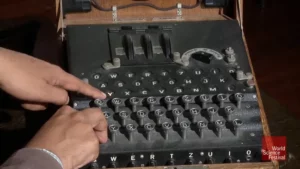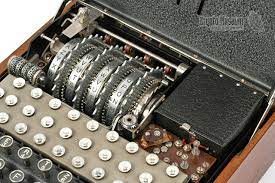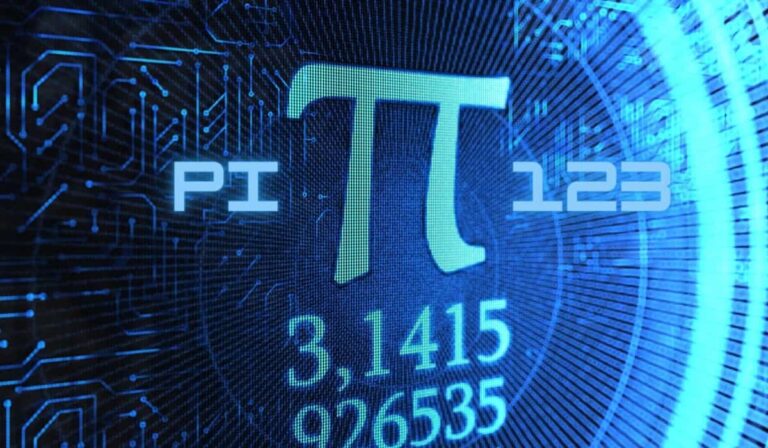The Enigma machine was an excellent encryption tool from the 1900s. The Germans often used it during World War II to send secret messages. It was like a super-duper personal code maker.
Join us as we delve into the definition of “enigma,” seeking to illuminate the enigmatic depths of this captivating term.
What is Enigma?- Briefly Explain!
Enigma, a term often associated with mystery and intrigue, transcends its humble origins in word puzzles to represent something far more profound. This groundbreaking machine revolutionized the landscape of encrypted communication.
Far from mere linguistic curiosity, Enigma embodied a complex and sophisticated apparatus, resembling a typewriter on steroids, capable of transforming plaintext messages into an incomprehensible jumble of characters that only those possessing the correct cipher settings could decipher.
This remarkable device was not merely a gadget relegated to the annals of history but held a central position in the theater of military communication, particularly during the tumultuous periods of the two World Wars.
In the clandestine world of wartime operations, Enigma emerged as the go-to tool for encoding and transmitting sensitive information securely across enemy lines. Its ability to generate seemingly impenetrable codes conferred a significant advantage upon its operators, enabling them to safeguard vital strategic plans.
The historical significance of Enigma cannot be overstated. It served as a linchpin in the intricate machinery of war, profoundly influencing both World War I and World War II. The effectiveness of its encryption methods posed a formidable challenge to Allied codebreakers, who labored tirelessly to unravel its secrets and gain access to enemy communications.
Indeed, the successful decryption of Enigma-encoded messages by Allied cryptanalysts, most notably at Britain’s Bletchley Park, is widely regarded as a pivotal turning point in the conflict, hastening the eventual Allied victory.
Historical Background of Enigma – Read Important Steps!

1. Invention of the Enigma Machine:
The tale of Enigma began in the early 20th century when a German engineer named Arthur Scherbius came up with the idea for a military-grade encryption machine. Scherbius, who would later be hailed as both a genius and a colossal pain in the neck for allied forces, patented the Enigma machine in 1918.
2. Enigma’s Use in World War I:
During World War I, the German military primarily used the Enigma machine to protect sensitive information from falling into enemy hands.
Its complex encryption mechanism made it incredibly difficult for adversaries to crack the codes and understand the encrypted messages.
3. Enigma in World War II:
Fast forward to World War II, and Enigma again became an integral tool for the German military. This time, however, the Allies were determined to decipher the messages intercepted from Enigma and gain a crucial advantage.
The code-breaking efforts at Bletchley Park, led by the brilliant Alan Turing, would change the course of history.
Key Components and Mechanisms of Enigma – Read Essential Points!
-
Overview of Enigma Machine:
The Enigma machine was a mechanical device that consisted of a keyboard, a series of rotating rotors, and a display panel.
Electrical signals would pass through the rotors when a letter was pressed on the keyboard, creating a different encrypted letter on the display panel. It was like the world’s most complicated game of telephone.
-
Rotors and Rotor Settings:
The rotors were at the heart of Enigma’s encryption magic. They were interchangeable wheels with carefully arranged wiring inside. The encryption pattern would change by changing the rotor settings, making it harder to crack the code.
-
Plugboard and Steckerbrett:
To add an extra layer of complexity, Enigma also had a plugboard or “Steckerbrett,” where pairs of letters could be swapped before the electrical current passed through the rotors.
This meant that the same letter could be encoded as different letters in different messages. It was like playing a never-ending game of Scrabble with constantly changing rules.
How is Enigma Used? – You Must Know!

- Military: Enigma was used by the German army to send secret messages during the war. It helped keep their plans and movements safe from enemy eyes.
- Diplomacy: Governments also used Enigma for secure communication between embassies and officials. This ensured that sensitive information stayed confidential.
- Business: Enigma wasn’t just for governments. Banks and companies use it to protect their financial transactions and trade secrets.
How It Worked:
- Key Settings: Enigma used unique settings, like rotors and plugboards, to scramble messages. These settings are changed daily to keep messages safe.
- Encryption: To encode a message, you’d type it into the Enigma machine. The machine would scramble each letter as you ordered.
- Decryption: The recipient would use their Enigma machine, set to the same settings, to unscramble the message and read it.
Enigma’s simple yet effective methods helped keep secrets safe in many different areas, making it a crucial tool for secure communication.
Factors and Features of Enigma – Read Important Factors!

Complexity:
It stands out because it’s super complicated. Unlike simple codes, it used fancy gadgets like rotors and plugboards to scramble messages. This complexity made it hard for anyone to crack the code.
Security:
Enigma was like a fortress for messages. It changed its settings daily, making it nearly impossible for unauthorized people to read the encoded messages. This made it a top choice for keeping military and diplomatic secrets safe.
Historical Significance:
Enigma isn’t just any old encryption tool. It played a huge role in World War II, shaping the outcome of battles. The fact that it was used by the German military and cracked by Allied codebreakers adds to its mystique.
FAQs:
1. How did the Enigma machine work?
The Enigma machine used a series of rotating rotors to scramble plaintext messages into ciphertext. The settings of the rotors and plugboard determined the encryption key.
2. Who used the Enigma machine?
During World War II, the German military primarily used the Enigma machine for secure communication. It was also used by other Axis powers and occasionally by Allied forces after captured machines were analyzed.
3. Is the Enigma machine still used today?
No, the Enigma machine is no longer used for military or commercial purposes. However, it remains a symbol of cryptography and is often featured in historical exhibitions and educational contexts.
Conclusion:
With its fancy design and tricky codes, the Enigma machine is like a puzzle from history that still captures our imagination. It played a big part in World War II, helping keep secrets safe and influencing the outcome of battles.





